
Working Through COVID-19
Remote Work Support Survey
COVID-19 is here to stay, at least for the foreseeable future. Will employers keep their employees working remotely? And will remote workers be on the hook for home office expenses?
The Conference Board of Canada surveyed organizations across the country on their plans for supporting remote workers.
Here’s what we found.
Note: Survey responses were collected on Monday, June 22, 2020. These findings are part of a Conference Board series on work and pay during the COVID-19 pandemic. Stay tuned for updates as this situation evolves.
Pre-pandemic, nine in 10 organizations had less than 20 per cent of their workforce working remotely. COVID-19 has flipped this on its head. Now, nearly two thirds of organizations have at least 60 per cent of their workforce working remotely.
Home is where the office is
Q: What percentage of your organization’s workforce works remotely?
(n = 273; percentage of organizations)
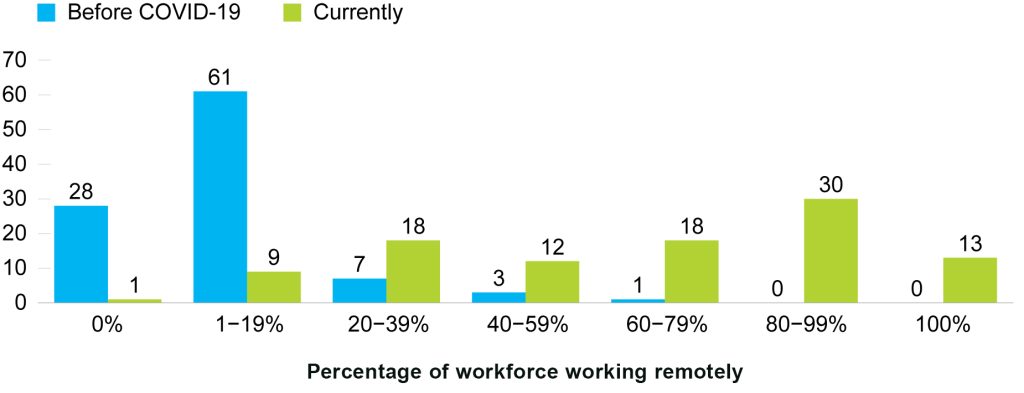
Notes: Totals may not add up to 100 due to rounding.
Source: The Conference Board of Canada.

Organizations have flagged productivity as a concern in moving to a more remote workforce. To help set up home offices, employers have allowed their employees to take home essential equipment.
More than half of organizations are allowing employees to take home their chair, signaling that remote work will continue—at least for the foreseeable future—and employers are considering ergonomic needs.
Working from home? Take your computer
Q: For employees working remotely due to COVID-19, what equipment has your organization allowed them to take home for their remote office set-up?
(n = 271; percentage of organizations)
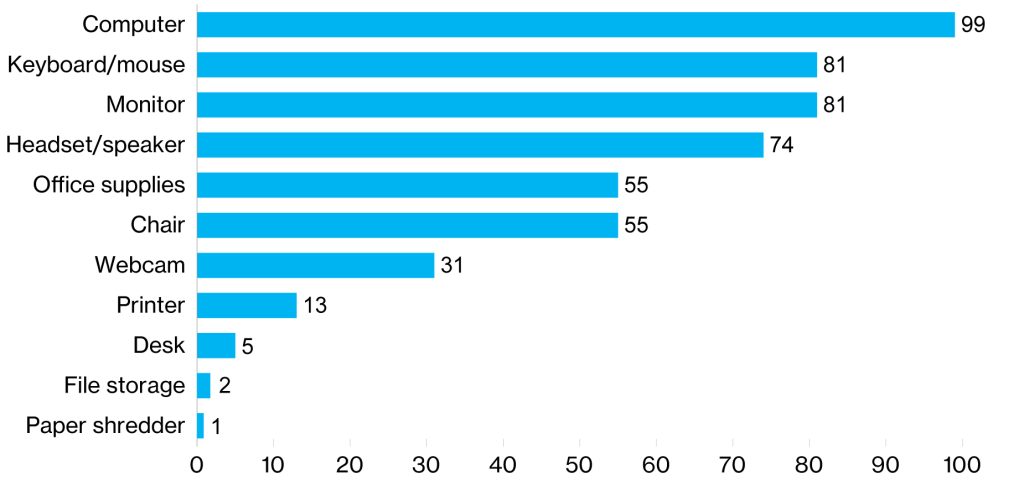
Note: Totals do not add to 100 as more than one response could be given.
Source: The Conference Board of Canada.
Who’s footing the bill for home office expenses?
On top of allowing employees to take office equipment home with them, 40 per cent of organizations also provide an allowance, or reimburse home office costs to some degree.
Home office set-up on employees’ dime
Q: As a result of COVID-19, how has your organization changed the allowance and/or reimbursement amount(s) it provides to employees to cover the costs of working remotely?
(n = 275; percentage of organizations)
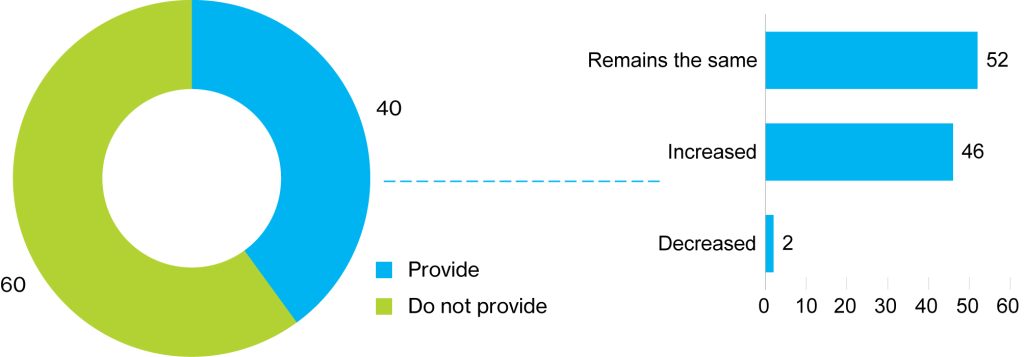
Source: The Conference Board of Canada.
Reimbursement top choice for employers
Q: To cover work-related expenses, which of the following is your organization providing to employees currently working remotely?
(n = 108; percentage of organizations providing allowance and/or reimbursement)
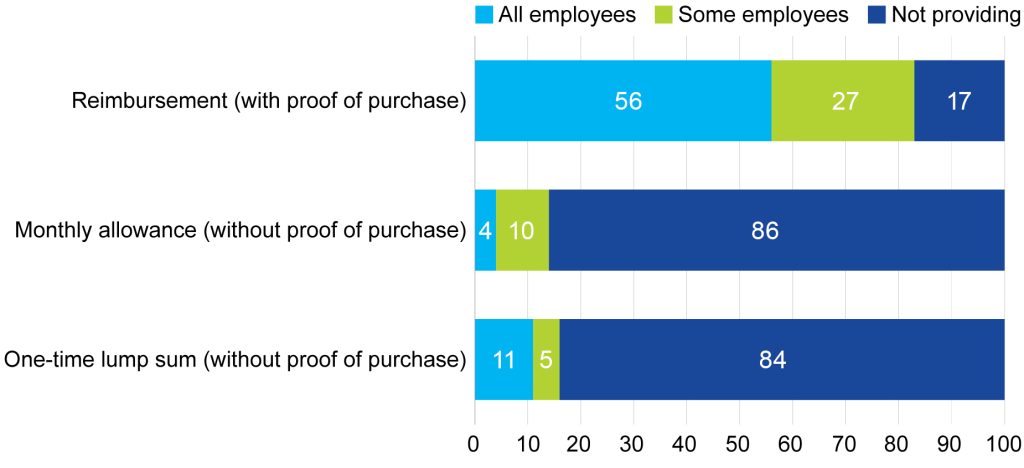
Note: Sample size indicates the number of organizations providing a response for at least one of the above options.
Source: The Conference Board of Canada.
Some organizations are offering a one-time lump sum home office allowance, ranging from $100 to $500, or a monthly allowance between $50 and $300 per month. Reimbursing work-related expenses is by far the most popular approach. Smaller office items, such as a keyboard, mouse, headset, or speaker, are the most common items eligible for reimbursement.
Where reimbursements exist, select essentials are covered
Q: What remote office equipment is eligible for reimbursement?
(n = 38; percentage of organizations providing reimbursement)
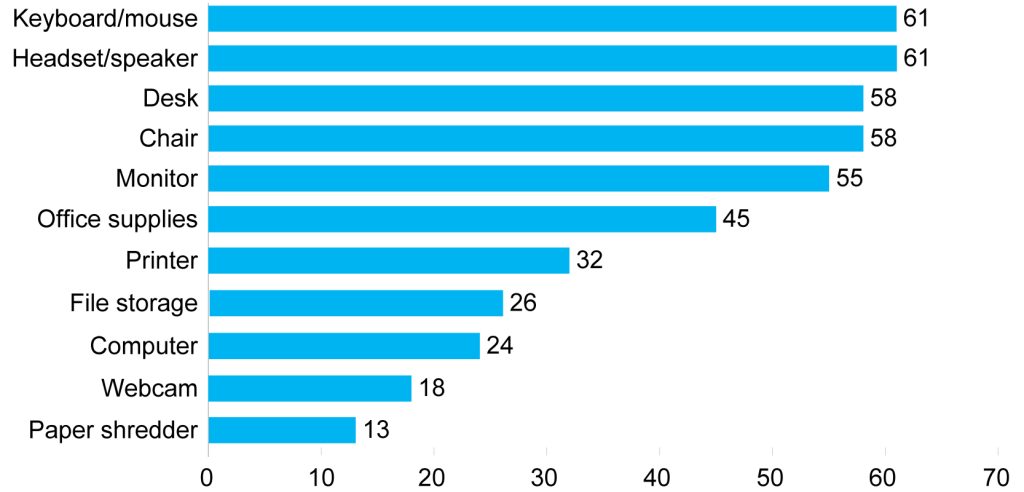
Note: Totals do not add to 100 as more than one response could be given.
Source: The Conference Board of Canada.

What’s the long game?
Looking medium-term—until there is a vaccine, effective treatment, or the risk has greatly reduced—55 per cent of employers will be keeping at least half of their workforce remote.
The majority of organizations are still considering their long-term approach, but early results show that many employees will eventually be called back to the workplace.
Remote work not in the cards long-term
Q: Moving forward, what best describes your organization’s plan for the portion of its workforce that can work remotely?
(n = 275; percentage of organizations)
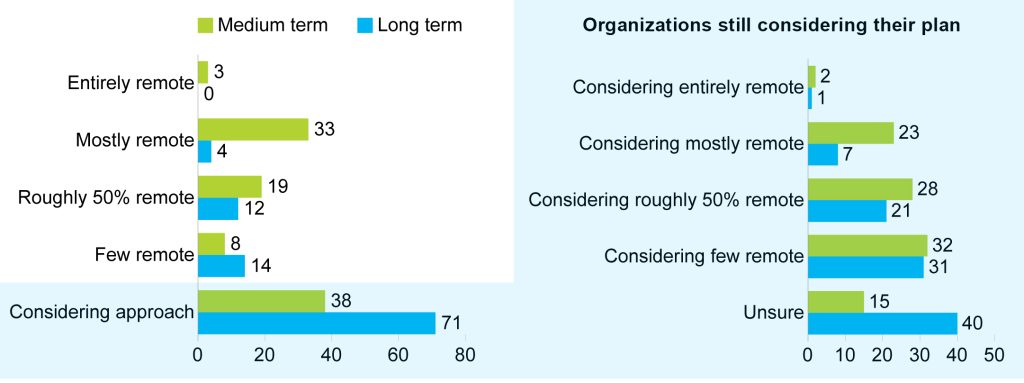
Note: Totals may not add to 100 due to rounding.
Source: The Conference Board of Canada.

According to employers, employee safety is a top factor behind moving or considering moving to a more remote workforce. Other drivers include cost savings and supporting a work-life balance.
Many organizations signalled that remote work will not be the norm further down the line. However, now that employees have established themselves at home, some employers are worried there will be resistance to a return to the workplace.

